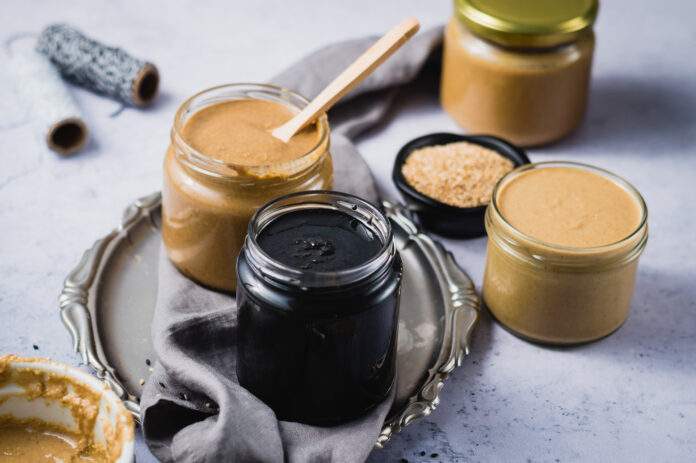Introduction
Tahhiini or tahini is a paste with the flavor of nuts made of ground sesame seeds. Effective in its use, tahhiini is a native food of the Middle East, Mediterranean, and North Africa that impresses its marks even on desserts and side dishes. Nutritious with healthful fats, rich in cooking traditions, tahhiini has now become an ingredient with world-wide popularity that does not recognize any nationality and any location.
The History and Origin of Tahhiini
The tahhiini also possesses a very long history dating back thousands of years. Its main ingredient, sesame seeds, is one of the oldest recorded ever to have been cultivated on the planet and somehow evolved in India and Africa. The ancient people like Egyptians and Persians loved sesame due to its oil-seed nature, which was highly tradable and portable.
Tahhini in its current form spread all over the Levant and countries within the Eastern Mediterranean to become part of ancient cuisine. Ancient World recipes that define foods affirm sesame paste is consumed as part of sauces, dips, and also as the foundation for sweet pastries. With time, the product was exported overseas and took hold in Turkish food and to Greece and beyond.
Nutritional Content and Health Benefits of Tahhini
Tahhiin not only tastes wonderful, but it is also packed with nutrients to promote good health and well-being.
1. High in Healthy Fats
Tahhini is almost entirely unsaturated fat, which has been shown to be very heart healthy. Healthy fats have been discovered to reduce bad cholesterol and promote brain function.
2. Packed with Plant-Based Protein
For vegetarians and vegans, tahiini offers a complete protein in that it has required amino acids used in the mending of muscle and the gaining of energy.
3. Rich Vitamins and Minerals
Tahiini contains a lot of calcium, magnesium, phosphorus, iron, and zinc, which are critical to bone density, immune function, and general health.
4. Full of Antioxidants
The tahhini sesame seeds are loaded with lignans and sesamol, antioxidants containing compounds that combat oxidative stress and inflammation.
5. Gut Benefits
Since it is made of high dietary fiber material, the digestion and healthy gut flora is nourished by tahhiini.
How Tahhiini is Prepared
Preparation of tahhini is quite effortless but requires cautious observation to produce the proper texture and taste.
Sesame Seed Choice – Unhulled and hulled top-grade sesame seeds are used. Hulled seed produces lighter, creamier tahhini, while unhulled seed produces nuttier, more intense taste.
Roasting – Seeds are roasted lightly in order to allow oil and nutty flavors to be released.
Grinding – Roasted seeds are ground fine by using a stone grinder or high-speed food processor.
Adjustment of Consistency – A teaspoon or so of oil (usually sesame oil) is added to achieve the desired creaminess.
Culinary Use of Tahhiini
Tahhini is a condiment that can be used to flavor an array of dishes in various cuisines.
1. Seasonal Dishes
Hummus – Blended with chickpeas, lemon juice, garlic, and olive oil to make a creamy dip.
Baba Ghanoush – Eggplant dip enriched by the addition of tahhini.
Salad Dressings – With lemon, garlic, and water to create a tangy, nutty dressing.
2. Sweet Creations
Halva – Sweet rich confection which is a part of mainstream eating in Middle Eastern societies.
Tahhiini Cookies – Soft, creamy, nutty mouth-melters.
Smoothies – To add creaminess and an added boost of nutrients.
3. Modern Fusion Cuisine
Chefs in every corner of the world are incorporating tahhini as an every-day ingredient in pasta sauce, barbecued meat, vegan cheese substitute, and even ice creams.
Variations and Types of Tahhiini
Food and geography are not alike; nor is all tahhini alike.
Light Tahhini – Made from hulled sesame seeds; less fragrant in flavor and more watery in consistency.
Dark Tahhini – Made from unhulled seeds; stronger, more fiber and minerals.
Flavored Tahhini – Scented with flavor spices like garlic, herbs, or chili for a kick.
Raw Tahhini – Made without roasting seeds to maintain a light, earthy taste.
Home Preparation of Tahhini
Home preparation of tahhini ensures freshness and possibility of personalization.
Ingredients:
- 2 cups sesame seeds
- 2–4 tablespoons neutral oil (optional)
- Pinch of salt (optional)
Instructions:
Toast the Seeds – Dry roasted sesame seeds in pan until aromatic.
Cool Completely – Prevents bitterness and overcooking during blending.
Blend – Put seeds in high-speed blender or food processor, blend to paste.
Adjust Consistency – Add incrementally for smoothness, and salt for seasoning.
Storage and Shelf Life of Tahhiini
Storage is the secret to making tahhiini stay fresh and flavorful.
Airtight Container – Prevents air and spoilage.
Cool, Dark Place – Prevents natural oils from becoming rancid.
Refrigeration – Facilitates extending shelf life, especially for home-made varieties.
Shelf Life – Commercial tahhiini has up to 6 months shelf life; home-made varieties 1–3 months.
Purchasing the Best Tahhiini
When purchasing tahhiini, make sure:
- Fewest Ingredients – None other than sesame seeds (and oil).
- No Added Sugars or Preservatives – Allow natural taste and purity.
- Smooth Texture – Leave grainy or exceedingly heavy seasoning out if undesirable.
Why Tahhiini is a World Culinary Treasure
Its application in food, its gastronomic and nutritional worth as an ingredient, has made it endure through the centuries. Used as a garnish for vegetables when added at the end of cooking, or as part of rich dressing, or as a mixture in desserts, tahhiini adds a rich, deep flavor to whatever dish it is part of.
